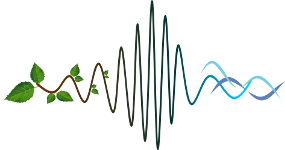The Biodiversity Exploratories were established in 2006, on three sites in Germany. In each site 50 plots in forests and 50 plots in grasslands were installed as long term research plots along a land-use and biodiversity gradient. The main target of the Exploratories is to understand the relationships between biodiversity, ecosystem functioning and land-use intensity. Within this framework we recently proposed a project to investigate how these relationships are reflected in the soundscape of the respective habitat and if acoustic diversity measures can be used to monitor effects on land-use intensity on biodiversity.
The already existing assessments of biodiversity for different plant, animal, fungal and microbial taxa within the Biodiversity Exploratories allow us to address the following questions:
a) Which aspects of biodiversity can be captured by acoustic diversity measures?
b) How are patterns of acoustic diversity altered by land-use intensity?
c) How do biophony and geophony vary with the complexity of vegetation structure?
To answer these questions we will install autonomous recording systems within each of the 300 plots. By recording the soundscape for a whole year and during several recordings per day, both daily and seasonal variations can be captured to document various aspects of sonic components. Recordings will be programmed to an acoustic sensors added to the VirtualSense node. VirtualSense is an open hardware, ultra-low-power, wireless sensor node, developed by the Department of Base Sciences and Foundations at the University of Urbino. The device will already provide values for acoustic complexity index (ACI) for each temporal unit for each frequency bin.

 PDF version
PDF version
